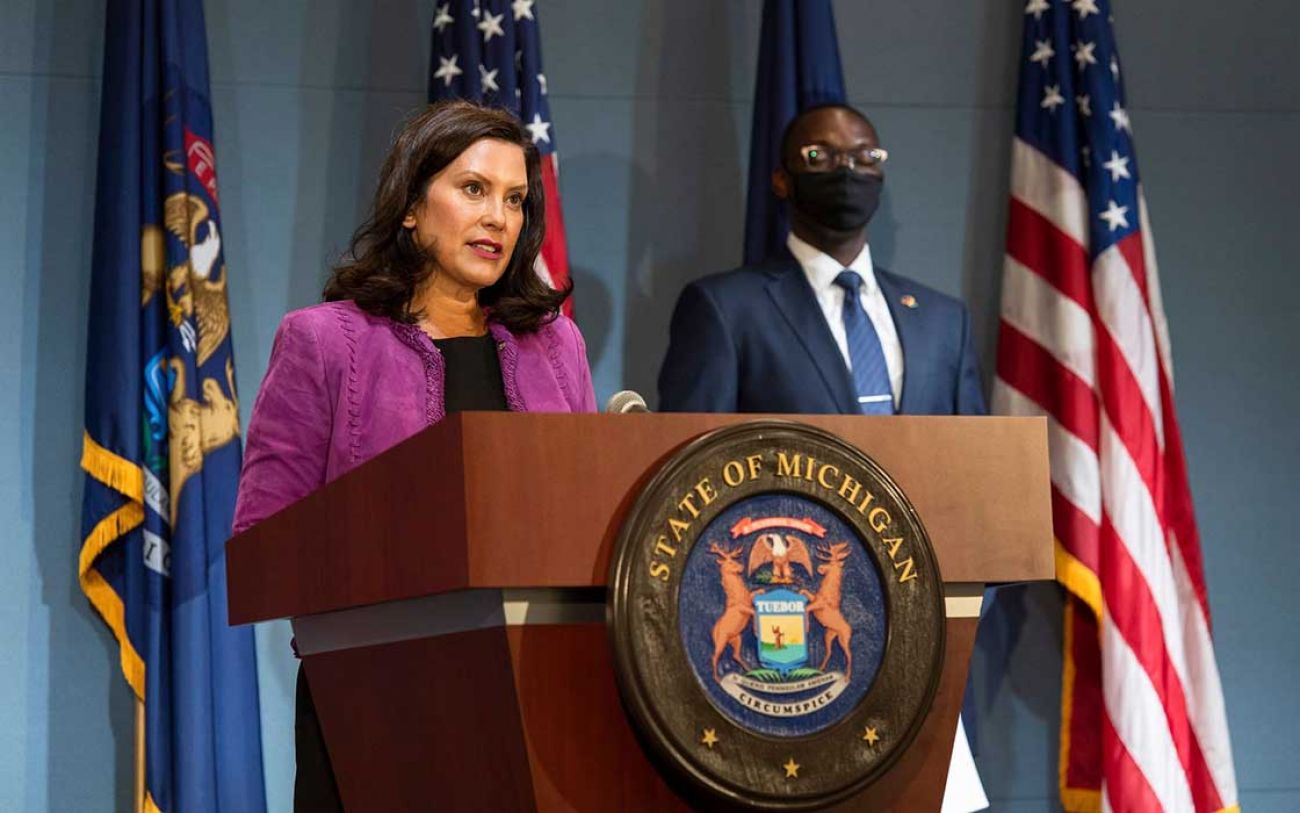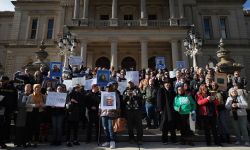Whitmer orders restrictions in Upper Peninsula as coronavirus cases spike

By this time next week, Upper Peninsula residents will be required to work remotely if they can, meet in smaller groups and wear masks in schools under an executive order issued Friday by Gov. Gretchen Whitmer.
The order moves the region back from Phase 5 of economic reopening to Phase 4 on Oct. 9, though Whitmer warned that “everyone should make this transition as swiftly as possible” given a surge in coronavirus cases in the region. Most of the Lower Peninsula is in Phase 4.
The phases are part of six-phase Whitmer’s MI Safe Plan and reflect the severity of the virus. Phase 5 is for regions where the virus is contained, while Phase 4 is for those where it’s improving but still dangerous.
- The latest: Michigan coronavirus unemployment, map, curve, updated COVID-19 news
- Dashboard: Michigan coronavirus testing numbers, trends, COVID-19 data
The governor has long warned she may “dial back” phases if coronavirus cases spike, but it is the first time she has done so since she announced the reopening plan in late April.
COVID-19 cases have soared in the Upper Peninsula over the last month, particularly in counties that border Wisconsin, which has the highest case rate in the country.
“After seeing the increase in cases in the U.P. region over the past several weeks and consulting with medical experts, I have decided to take action to protect U.P. families and move the region back a phase,” Whitmer said in a press release.
“I know this is hard. I know it will be an adjustment. But we can’t let our guard down. COVID-19 is still a very real threat to our families, frontline workers, and small businesses.”
The new order applies to people and businesses in all counties in the U.P. but it does not apply to Region 6, the 16 counties in northern Michigan.
Under the order:
- Children in grades kindergarten and up will be required to wear masks while in the classroom and other shared spaces.
- People who can work remotely will be required to do so.
- Indoor gatherings in homes will be limited to 10 people or less.
- Smaller stores will be required to limit customers inside to 25 percent of total occupancy limits.
- Bigger stores (50,000 square feet or more) must limit customers to 20 per 1,000 square feet of customer floor space.
- Bigger stores must dedicate at least two hours per week of shopping time to vulnerable populations, such as the elderly.
- K-12 schools will be required to publicly report information about coronavirus cases.
While the orders mostly affect business owners in the Upper Peninsula, the move could have implications for the rest of the state.
“The fact that a region had to move backwards should be a wakeup call to every other region that this is serious stuff COVID is intimately tied to our economy,” said Meegan Holland, spokesperson for the Michigan Retailers Association. “We need to pay attention to this virus and focus on getting rid of it, so nobody else has to move back.”
Setting more limits for stores won’t hurt retailers this fall the way it could have before Labor Day, said Ruth Eby, owner of the Souvenir Barn and Castle Rock in St. Ignace.
“It’s slowing down here,” Eby said. “A lot of stores are already closing. Our season is coming to an end.”
That’s a big contrast to summer, which Eby described as “the best in 50 years.” People traveled due to stimulus funding, she said, and they were spending money.
Dr. Joneigh Khaldun, the state’s chief medical executive, advised Michiganders in a statement to “stay laser-focused” on protecting themselves and their families by getting a flu vaccine ahead of the fall flu season, wearing a mask and staying socially distanced while in public.
Since Sept. 1, coronavirus cases have more than doubled in the 15 counties of the Upper Peninsula, from 1,006 to 2,621 on Friday. Most of those new cases are in six counties: Houghton, Delta, Iron, Menominee, Marquette and Dickinson.
The statewide rate of coronavirus cases is around 76 per million people, the governor wrote in the order.
Last week, it was more than eight times that rate in Houghton County (613 per million) and Delta County (675 per million) and six times as many in Menominee County (455 per million).
Health officials have tied the surge to outbreaks at Michigan Tech University in Houghton and rising cases in Wisconsin.
As case rates have risen, so too have hospitalizations; as of Friday, 27 people were being treated in Upper Peninsula hospitals. That's a smaller number compared to urban areas of Michigan but that's five times as many as the region had just over a week ago.
The governor’s ability to move regions of the state forward and backward in economic reopening phases is based on a continued declaration of the state of emergency. One law requires Whitmer to get the Legislature’s approval after 28 days to extend an emergency, but after the Legislature refused to do so early in the pandemic, she has continued to extend the emergency while claiming powers under a 1945 law that gives her broader authority.
Republicans are challenging the order in court, while a group of activists, Unlock Michigan, submitted 539,000 signatures on Friday in a bid to force a ballot measure to repeal the 1945 law.
Attorney General Dana Nessel is currently investigating the group after reports that a subcontractor for the group was coaching petition circulators to lie about the petitions and use other methods to get signatures that are illegal.
Bridge reporter Mike Wilkinson contributed to this report.
See what new members are saying about why they donated to Bridge Michigan:
- “In order for this information to be accurate and unbiased it must be underwritten by its readers, not by special interests.” - Larry S.
- “Not many other media sources report on the topics Bridge does.” - Susan B.
- “Your journalism is outstanding and rare these days.” - Mark S.
If you want to ensure the future of nonpartisan, nonprofit Michigan journalism, please become a member today. You, too, will be asked why you donated and maybe we'll feature your quote next time!




